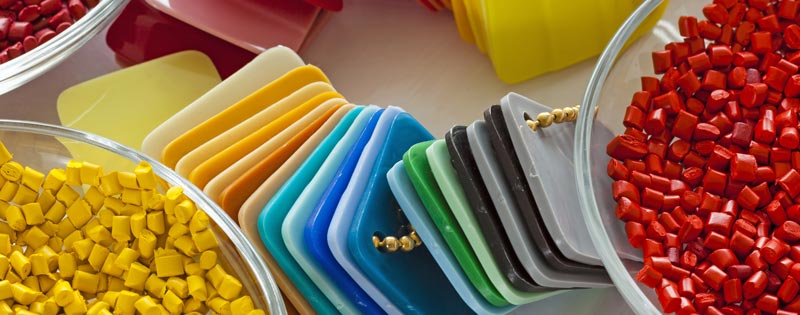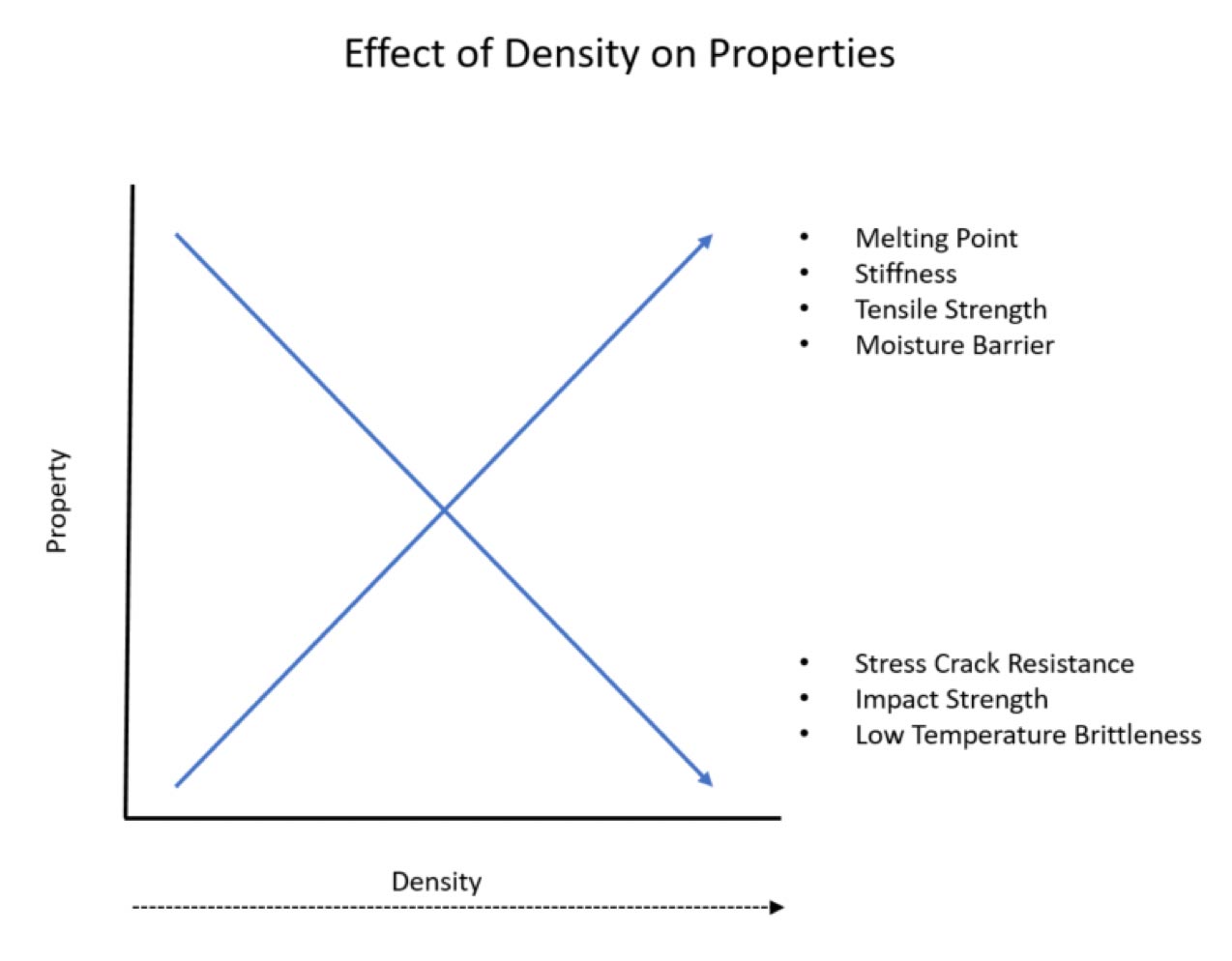
Plastic resins and materials
What is Plastic Resin?
There is a variety of plastic resins with varying physical properties and selecting the most suitable resin requires an in-depth understanding of your application. We work with technical specialists from plastic resin manufacturers such as Exxon, Chevron and LyondellBasell to choose a resin that meets the requirements of your product application.
To better understand your application, here are some considerations:
- What temperature will the product be exposed to?
- Will the product be exposed to any chemicals?
- What is the mechanical function?
- Is it an indoor or outdoor product?
- What other materials will be used in the assembly?
Here are some physical characteristics to take into consideration when selecting a plastic resin:
- Rigidity
- Flexibility
- Chemical resistance
- UV resistance
- Tensile strength
- Low temperature impact strength
- Flame resistance
- Environmental stress crack resistance
There are a wide range of plastic resins that can be used in the rotomolding process. Below is a basic explanation of what to expect:
LLDPE – Linear Low Density Polyethylene
- The density of LLDPE tends to be less than or equal to 0.925g/cm^3.
- LLDPE is used in products which require less stiffness and have light loads placed on them e.g. toys and electromechanical housings.
- Inherent properties include low ESCR, stiffness, consistent shrinkage and good warp resistance.
- MDPE – Medium Density Polyethylene
- The density of MDPE tends to be in the range of 0.926 g/cm^3 to 0.940 g/cm^3.
- MDPE has a higher stiffness and heat distortion than LDPE.
- Good impact strength and warp resistance.
- Excellent environmental stress crack resistance (ESCR).
HDPE – High Density Polyethylene
- The density of HDPE tends to be in the range of 0.941 g/cm^3 to 0.959 g/cm^3.
- Good impact and ESCR.
- Most rigidity of the 3 PE’s.
- Good chemical resistance.
XLPE – Cross Link Polyethylene
- Excellent ESCR and impact strength.
- Contains a crosslinking agent that acts as a strengthening component during the molding cycle. This reaction forms a crosslinked molecule similar to that of a thermoset plastic.
PCR and PIR – Post Consumer Regrind and Post Industrial Regrind
- PCR is commonly used by rotational molding companies and has become an important factor in reducing the amount of waste produced. Some products specify PIR as the base material, which is also known as reprocessed resin.
PP – Polypropylene
- PP is used in applications with high heat resistance requirements.
PVC – Polyvinyl Chloride
- PVC is a flexible liquid based resin which is commonly used in the marine industry. Examples include boat fenders and exercise balls.
- Low stiffness and higher cost.
Fire retardant Plastic Resins:
- Products which require fire retardant properties are commonly rated with a V-0 or V-2 rating. The rotomolding process is able to provide products with both a V-0 and V-2 certified resin.
Polyethylene is the most commonly used resin in the rotational molding industry. The table below gives a summary of density, physical properties and industry application.
Plastic Resin |
Density |
Physical Properties |
Applications |
| LLDPE | 0.910-0.939 | → Good Stiffness → Perfect Chemical Resistance → Good Tensile Strength → Impact Strength is Good → Good UV Resistance → Food Grade available → Recyclable |
→ Mechanical/ Electrical Housings and covers → Agricultural Tanks → Playground Equipment → Pallets → Marine Floats → Trash Cans |
| HDPE | 0.940-0.965 | → Excellent stiffness → Exceptional Chemical Resistance → Average Tensile Strength → Good Impact Strength → UV Resistance is Good → Food Grade available → Recyclable |
→ Large Tanks Agricultural Tanks → Ductwork → Some Chemical Tanks |
| XLPE | Various | → Very Good Stiffness → Good UV Resistance → Very Good Chemical Resistance → Very Good Tensile Strength → Not Food Grade → Very Good Impact Strength → Not Recyclable→ Very Good Heat Deflection |
→ Kayaks → Automotive Ducts → Fuel Tanks → Harsh environment products |
The density of polyethylene is characterized by the molecular chain. On the other hand, the degree of molecular branching indicates the density; longer, wider branched side chains are indicative of a low density polyethylene. Whereas a high density polyethylene has less extensive side chains.
Low Density Polyethylene molecular chain

High Density Polyethylene molecular chain

What are the effects of increasing the density of the polyethylene?
Increasing the density of polyethylene has the effect of lowering toughness and increasing stiffness. In addition, Tthis increase also has an improved effect on the heat resistance and barrier properties of the plastic.
What is the melt index of a polyethylene?
Melt index is a value with units “gm/10 min” which is determined by the following test. In the case of polyethylene, the polymer is heated to 374°F. A fixed predetermined weight of polyethylene plastic resin is placed on a piston top after which the weight of the piston pushes the molten polymer through a calibrated die. The polyethylene is collected over a predetermined period of time, in this case 10 minutes. Therefore, the resulting mass value of the rotomolding resin is then reported as the melt index.
What effect on the part’s physical properties and processing do different values of Melt Index and Density have?
When increasing the molecular weight of polyethylene the melt viscosity of it also increases. Increasing the molecular weight will provide improved properties such as impact strength and tensile strength.
Increasing Plastic Resin Melt Index
- Decreases the melting point of the resin.
- Increases the flow of the resin.
- Decreases the impact strength of the finished part.
- Does not affect the stiffness of the finished part.
- Decreases the low temperature impact resistance of the finished part.
- Does not affect the barrier properties of the finished part.
Increasing Plastic Resin Density
- Increases the melting point of the resin.
- Does not affect the flow of the resin.
- Decreases the impact strength of the finished part.
- Increases the stiffness of the finished part.
- Decreases the low temperature impact resistance of the finished part.
- Increases the barrier properties of the finished part.
Effect on Physical Properties of Rotomolding Plastic Resin |
||
| Increasing Melt Index | Increasing Density | |
| Melting Point | Decreases | Increases |
| Flow | Increases | No effect |
| Impact Strength | Decreases | Decreases |
| Stiffness | No effect | Increases |
| Tensile Strength | Decreases | Increases |
| ESCR | Decreases | Decreases |
| Barrier Properties | No effect | Increases |

